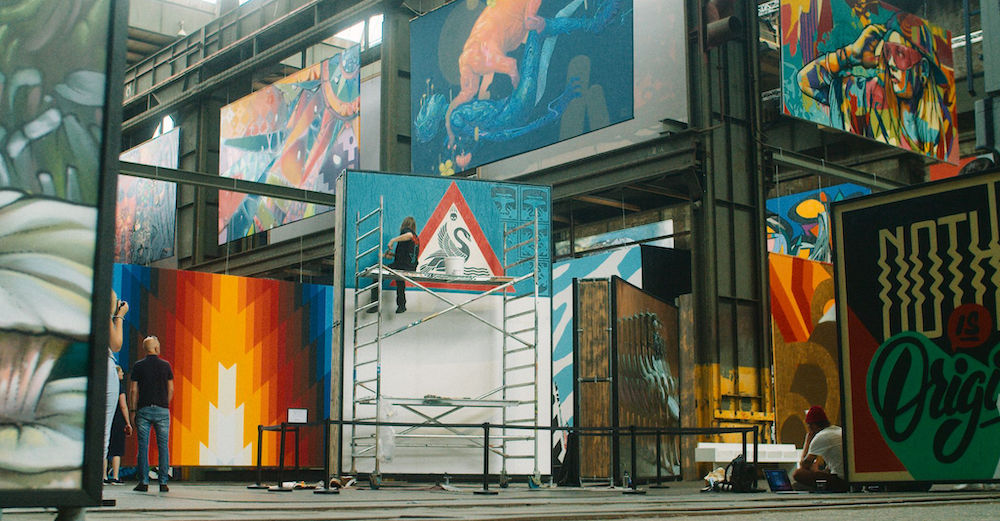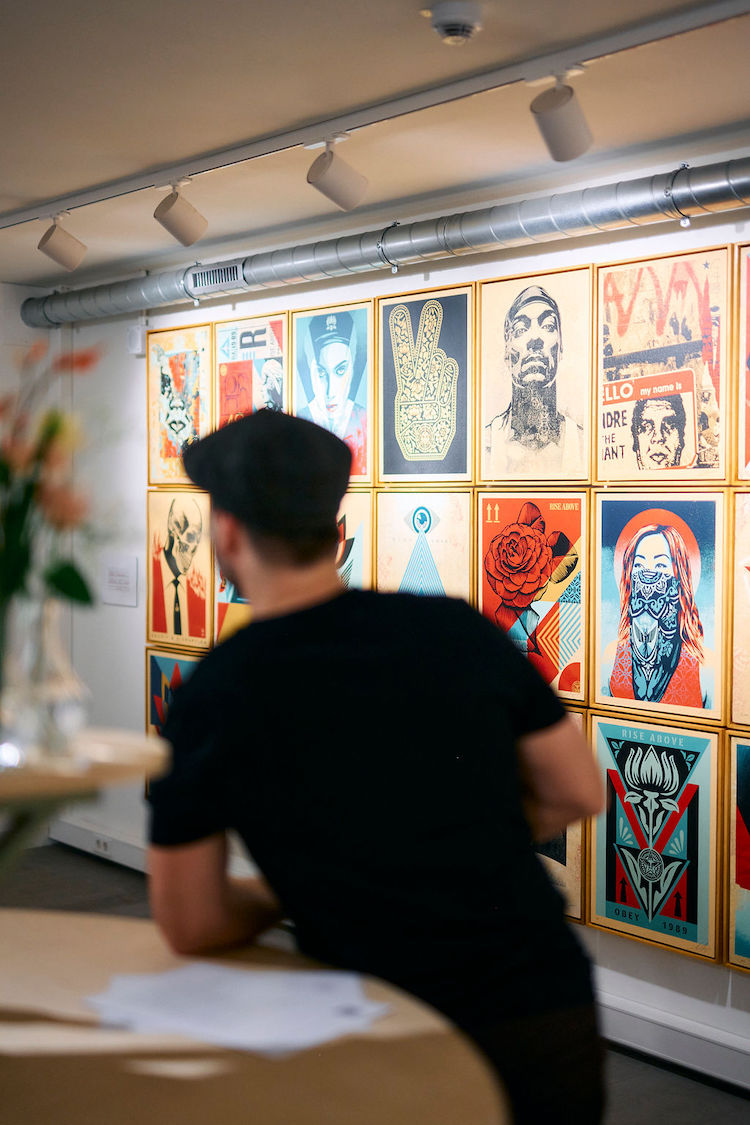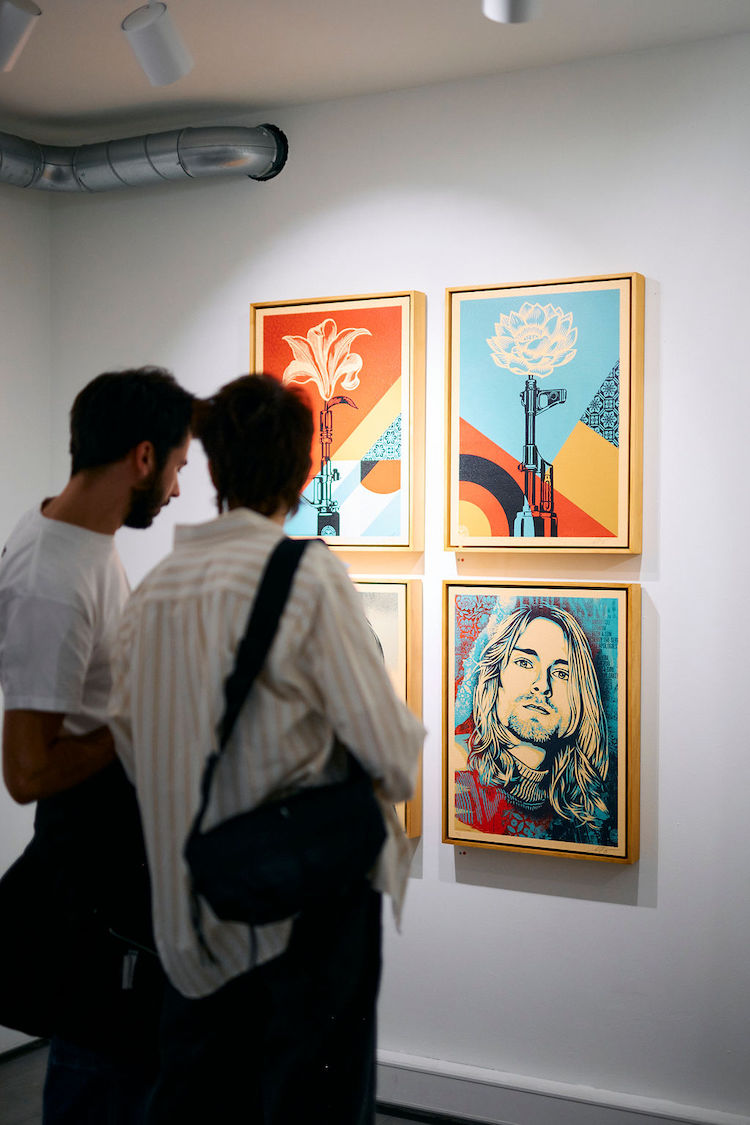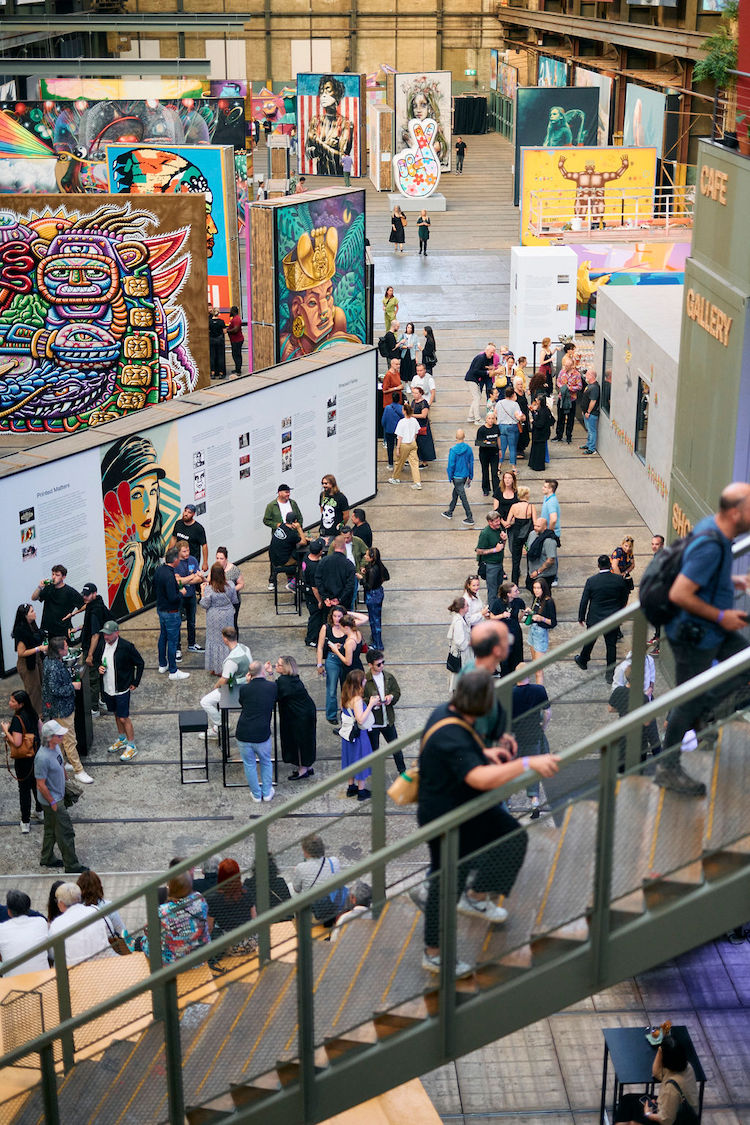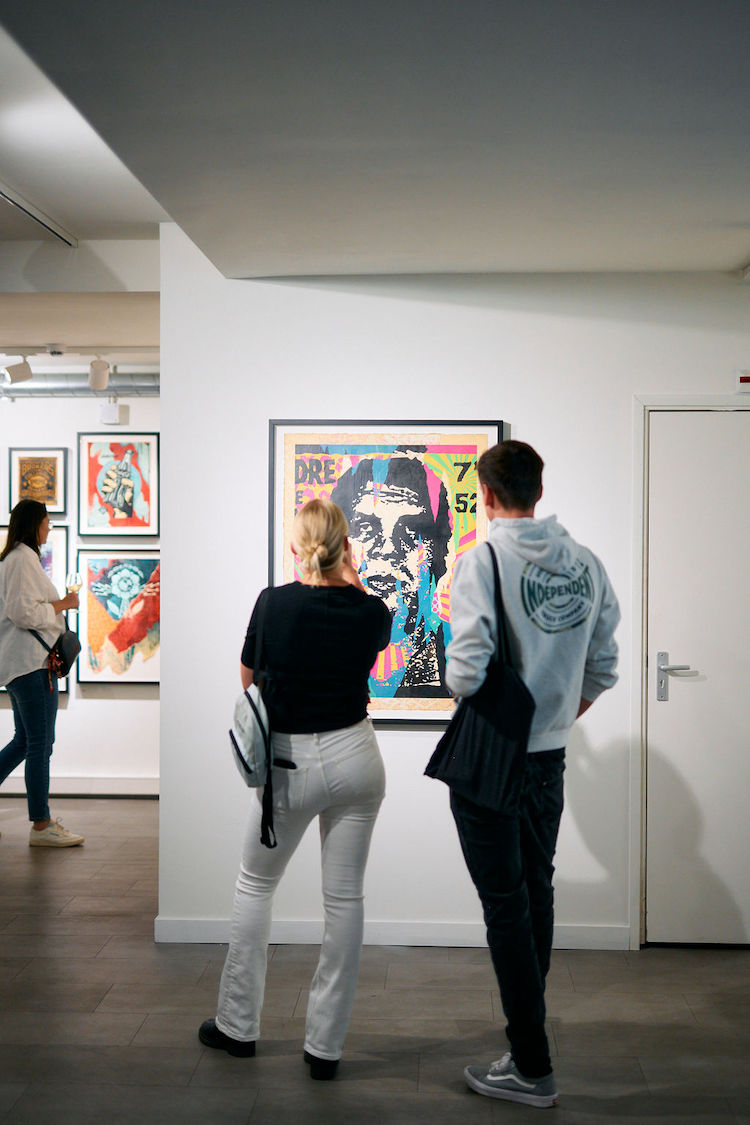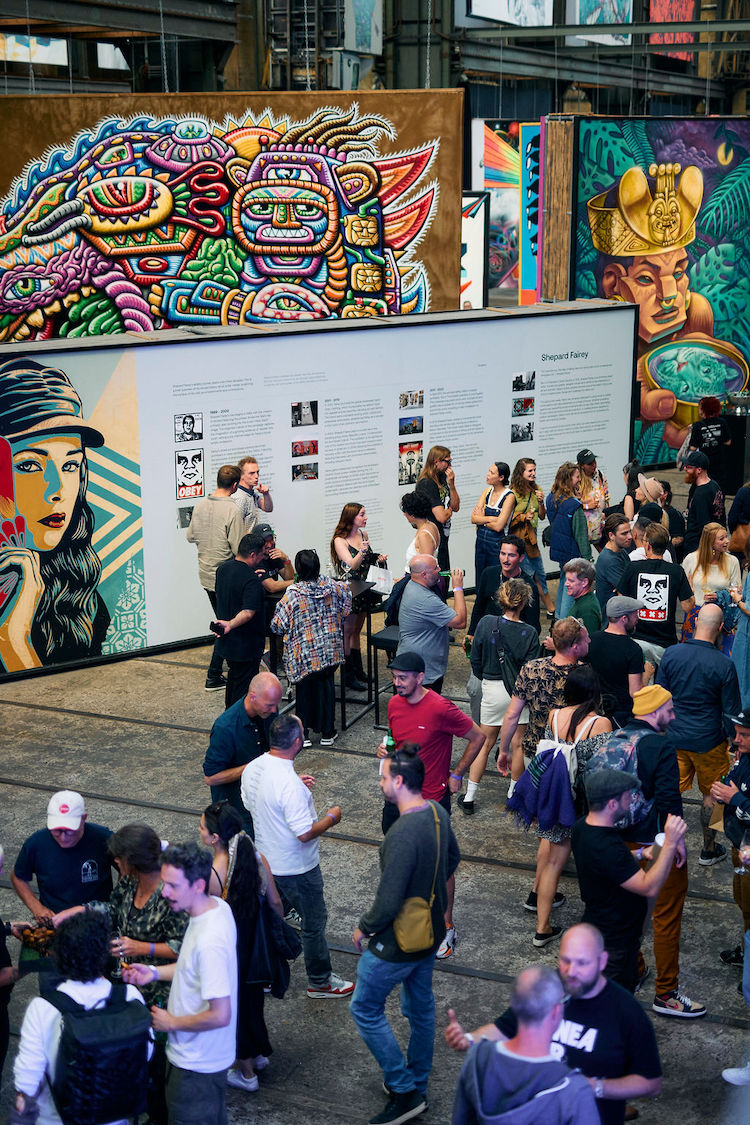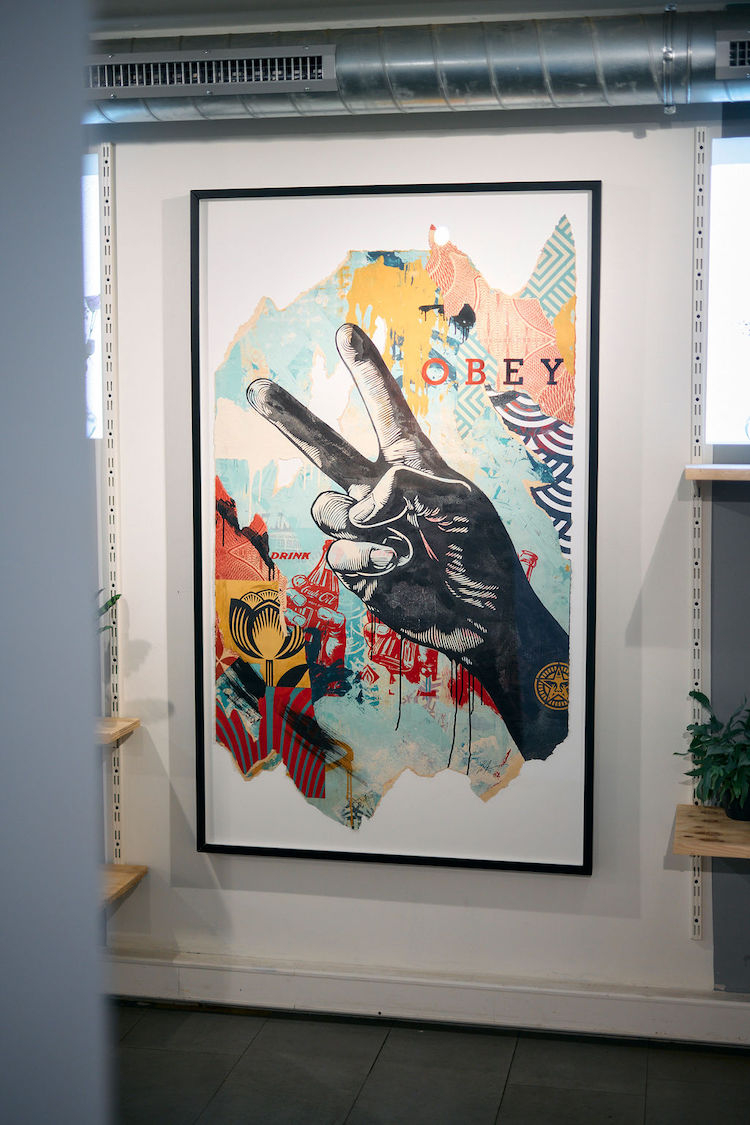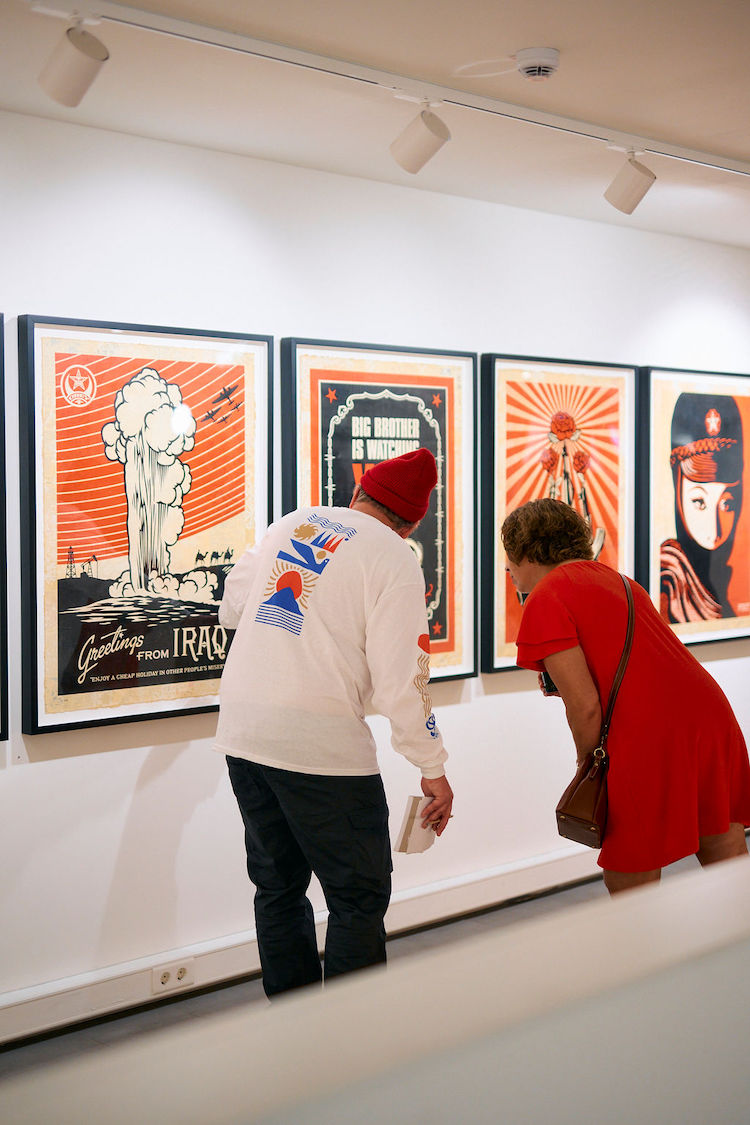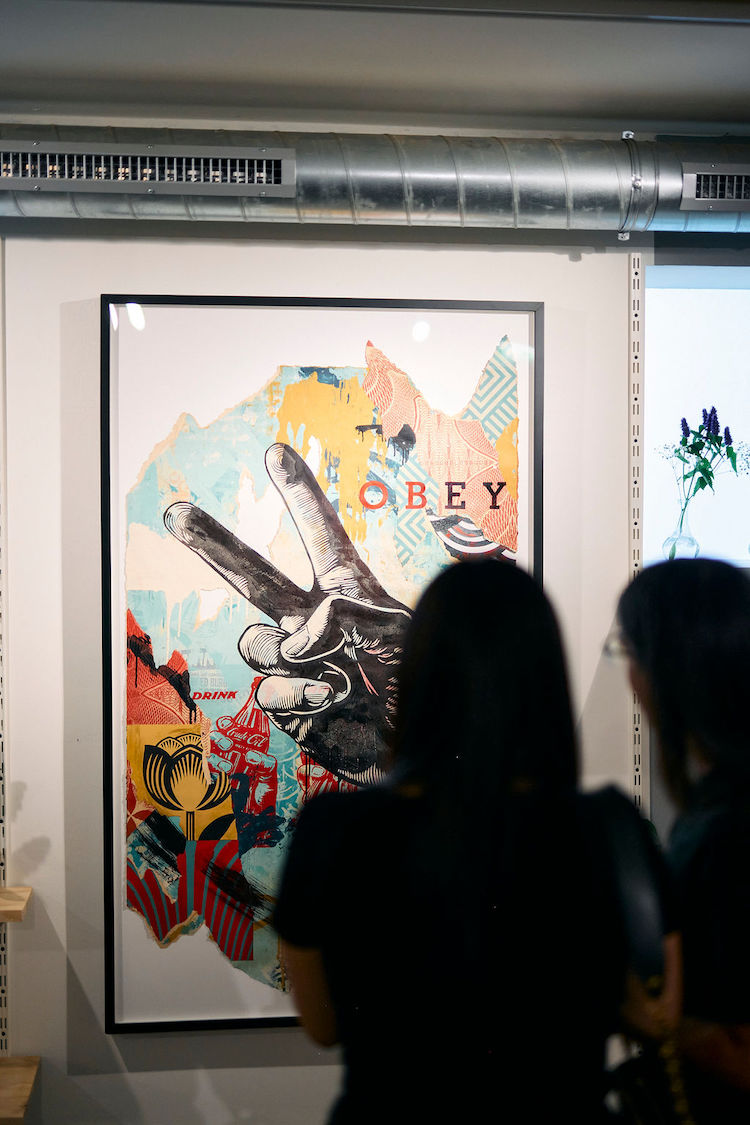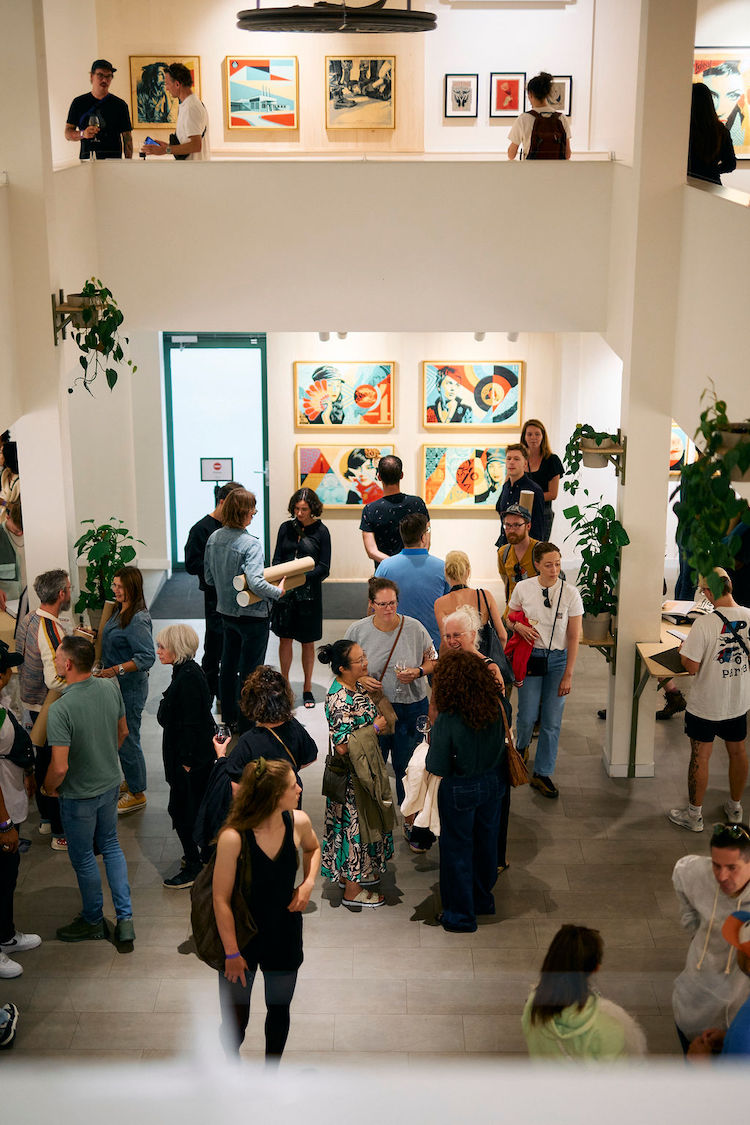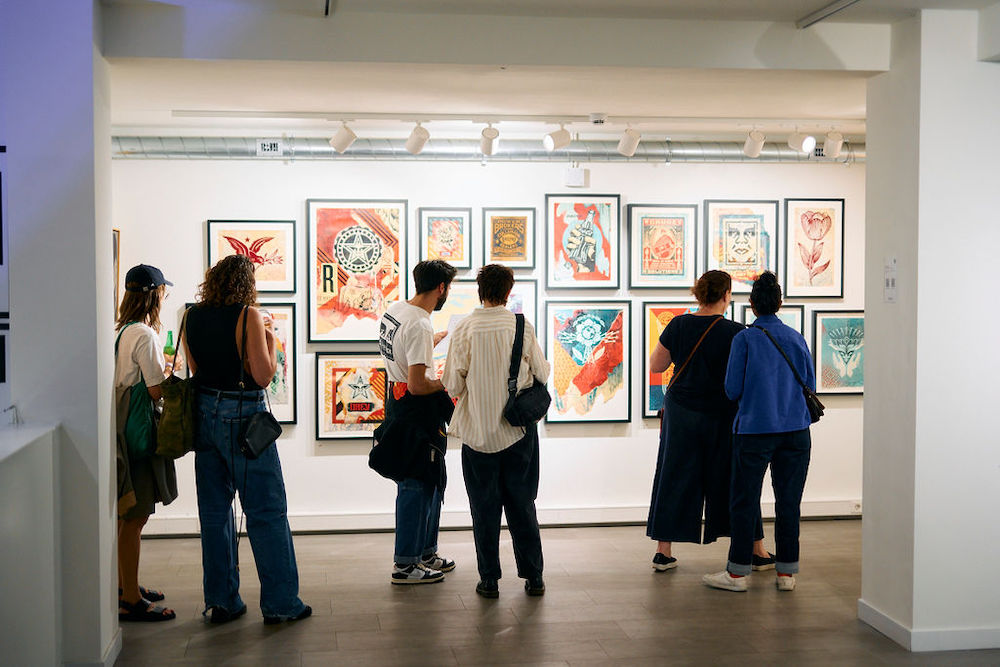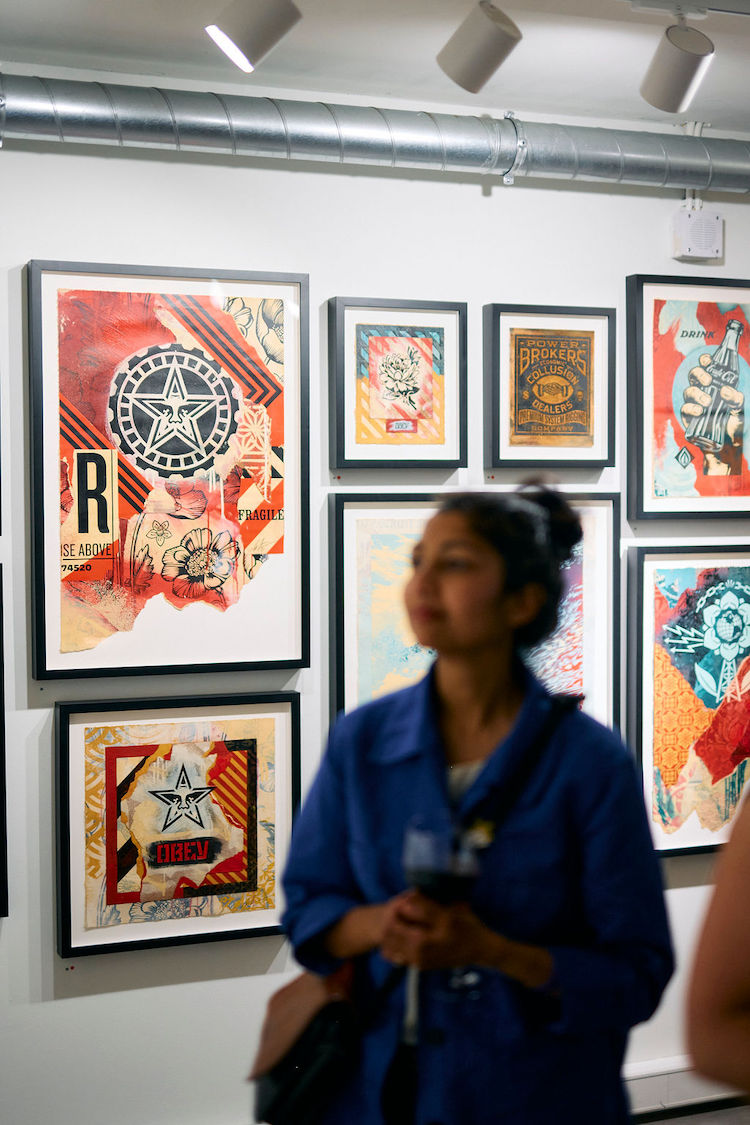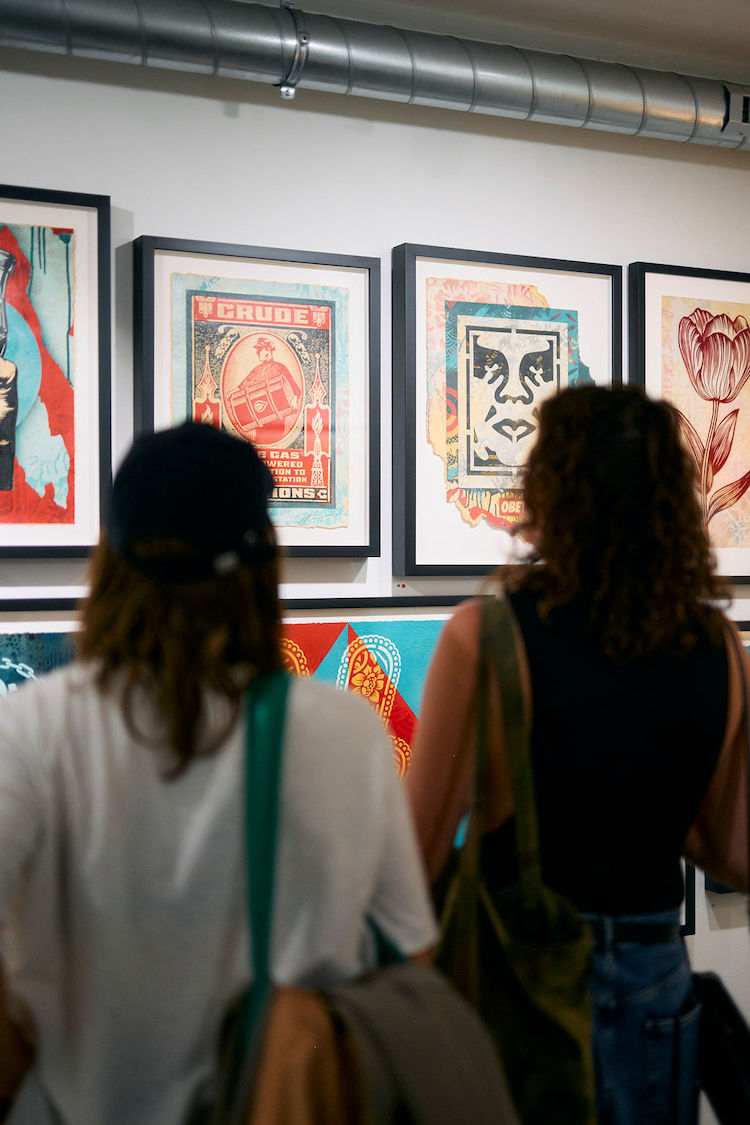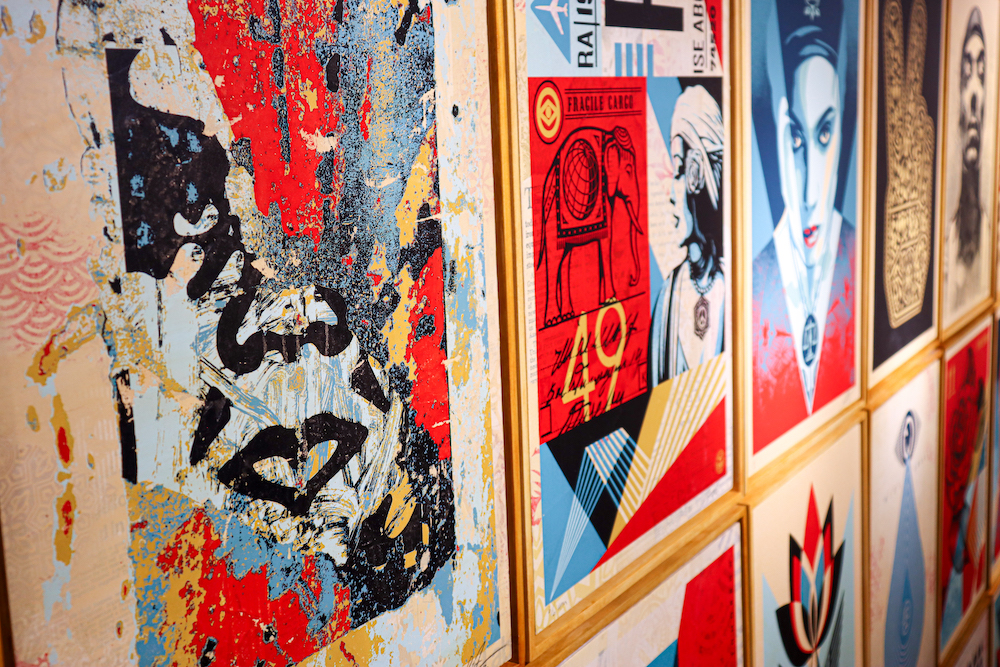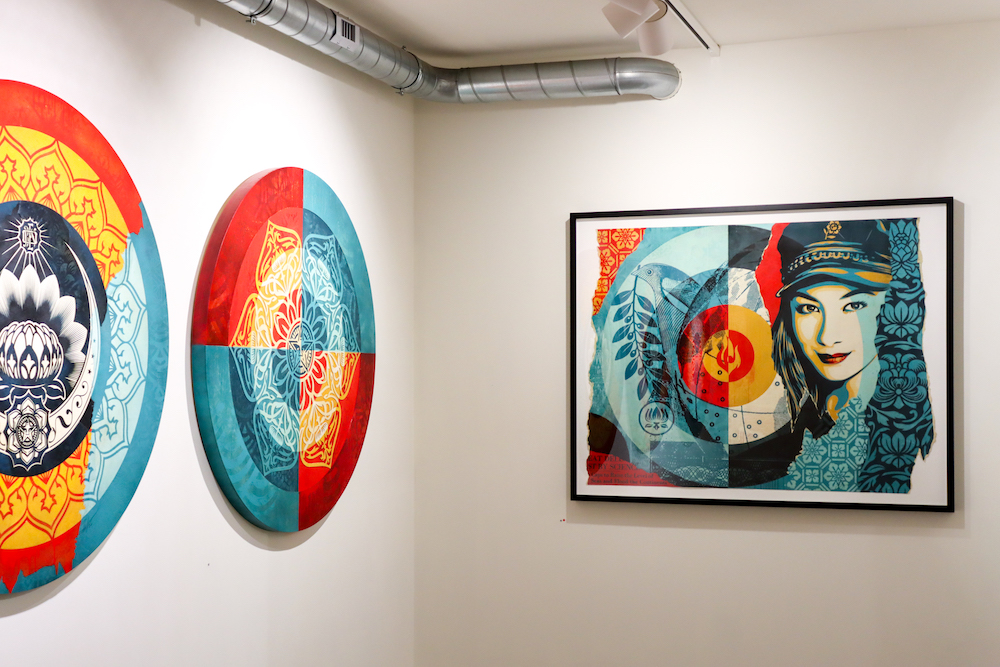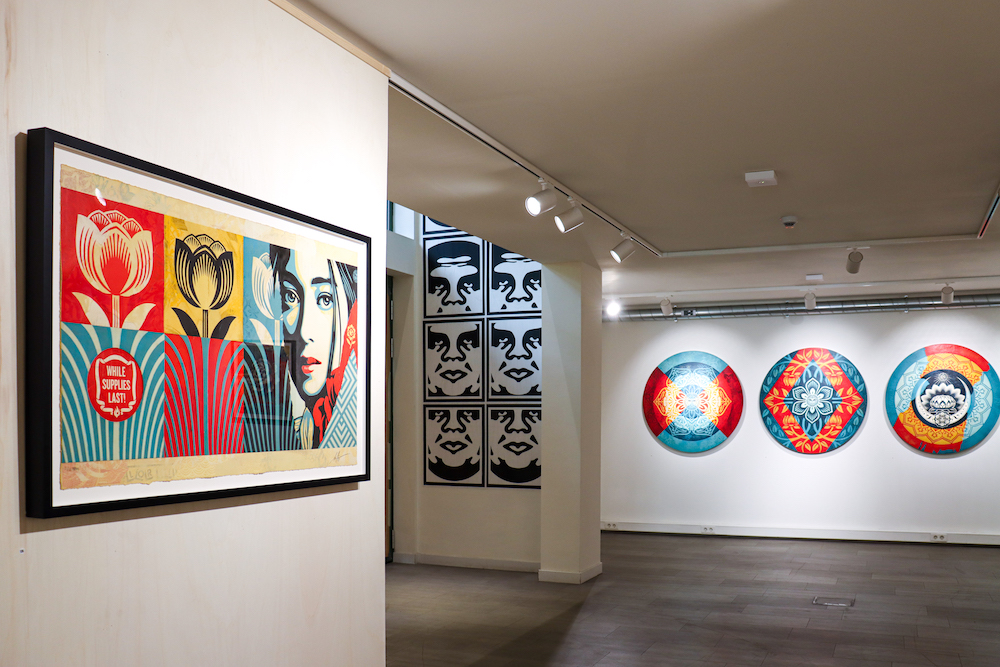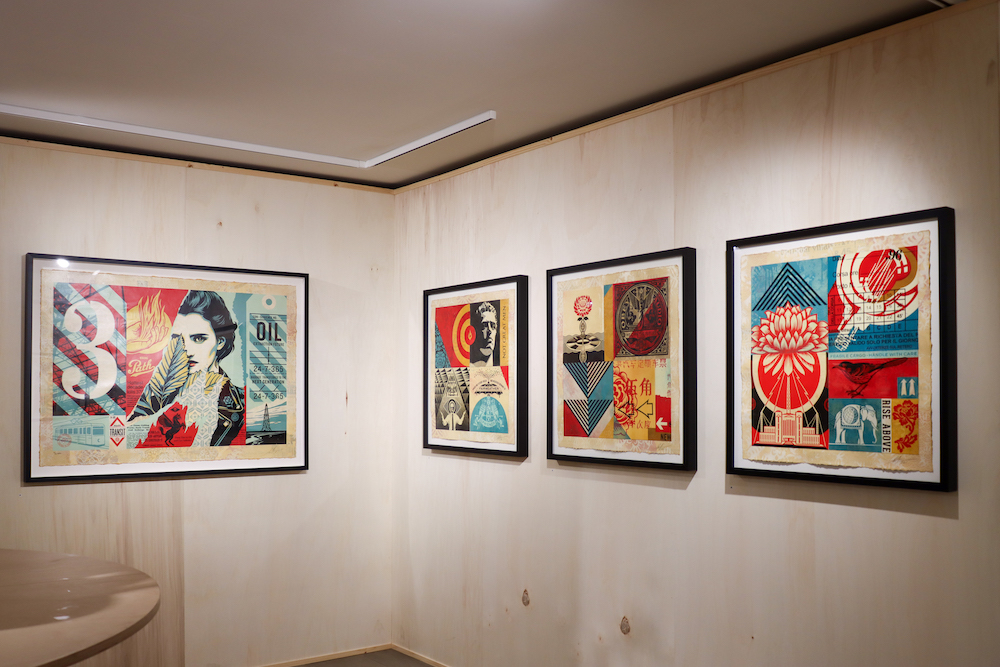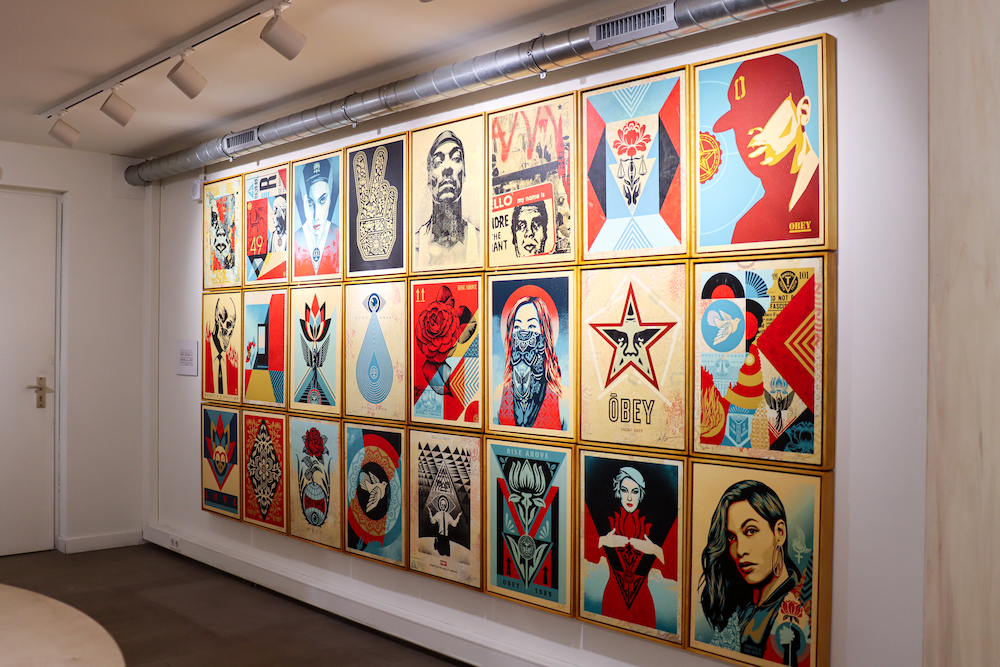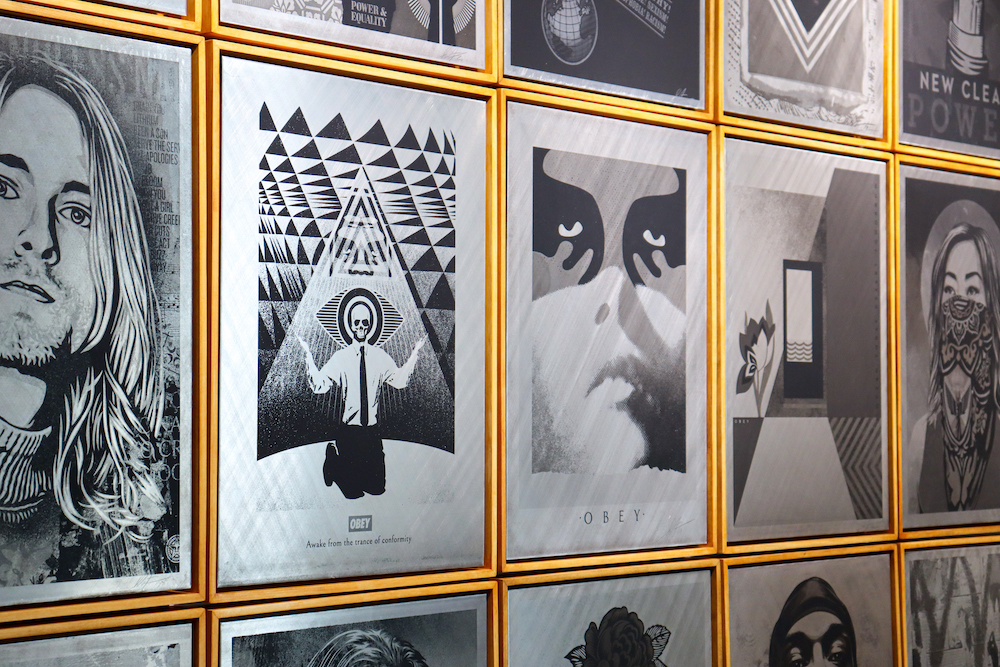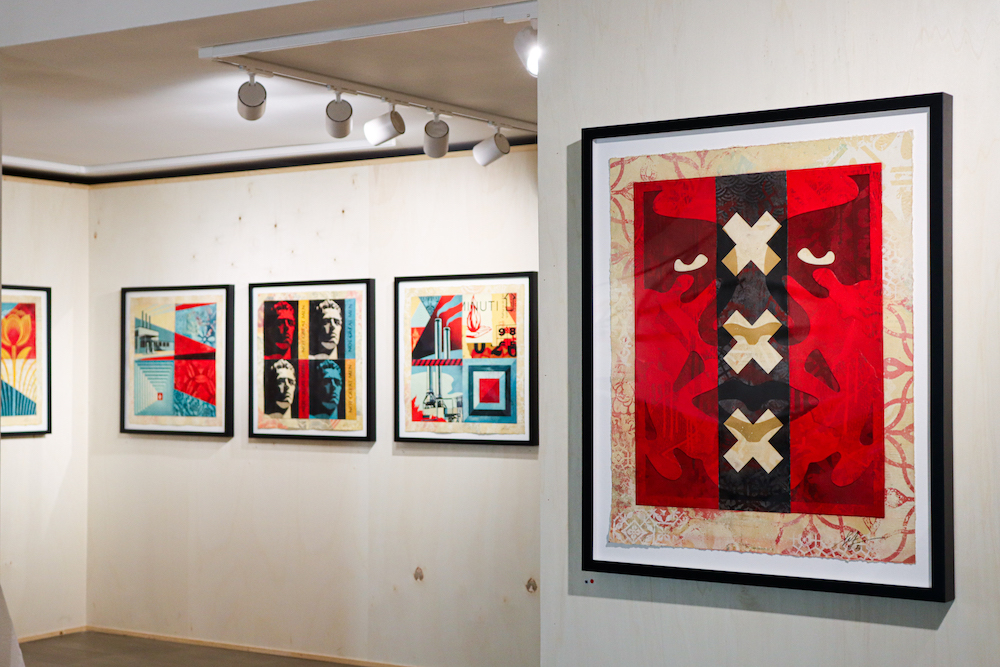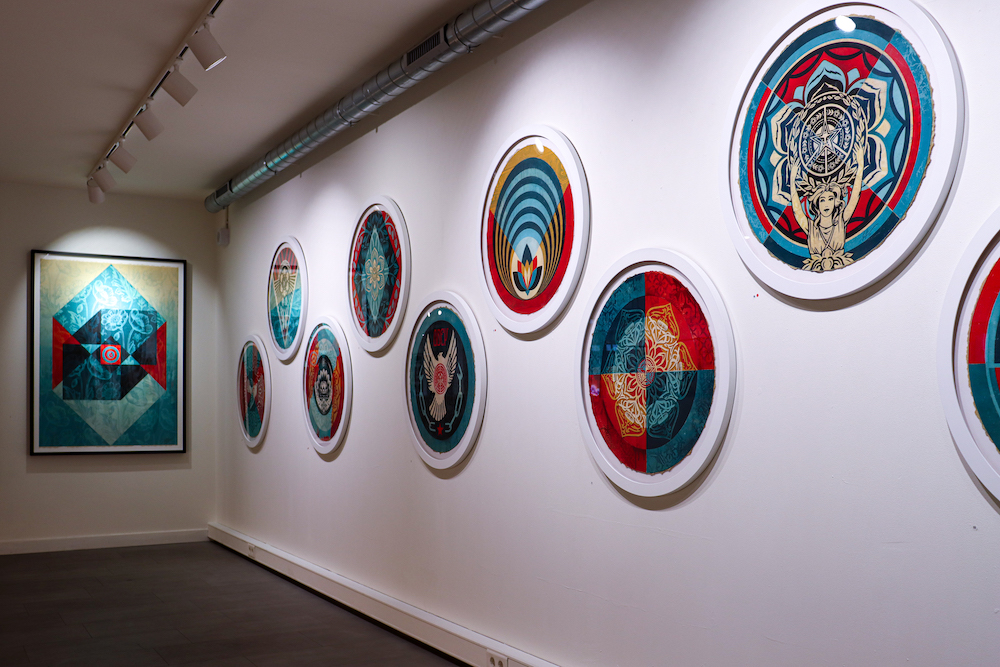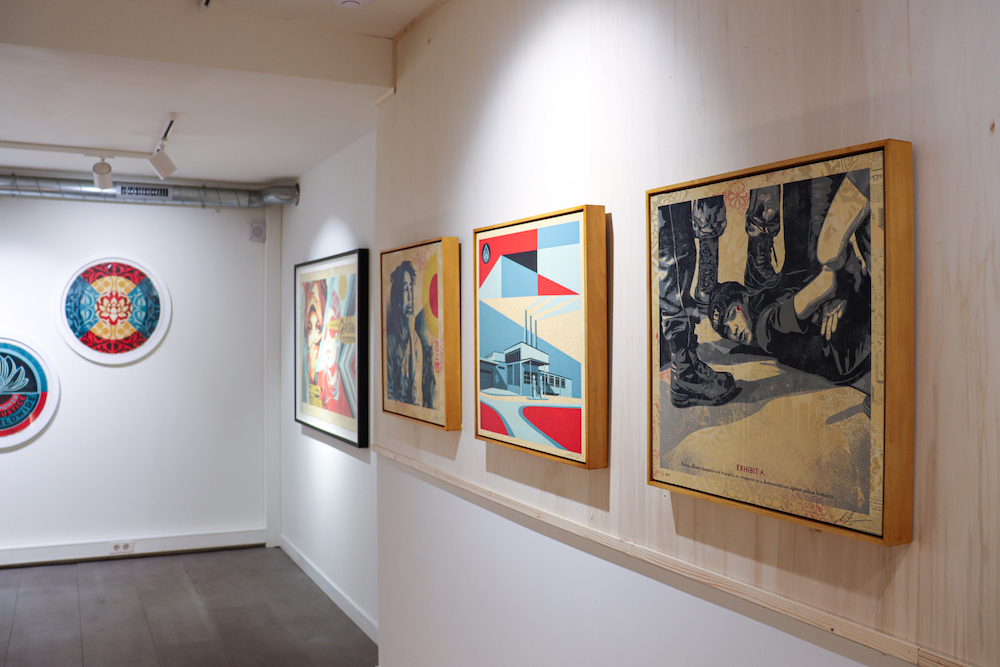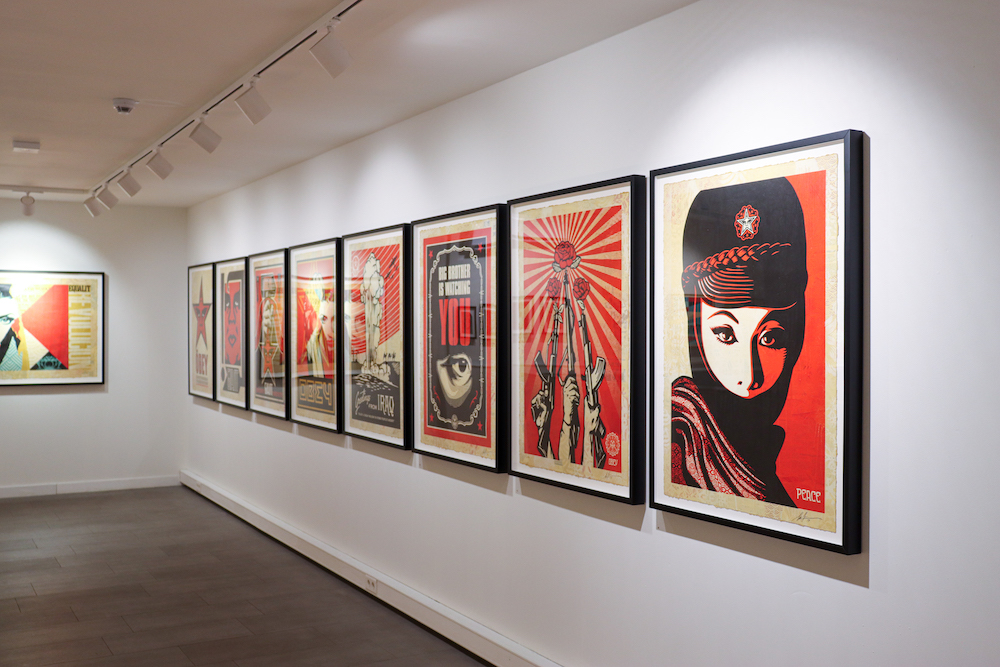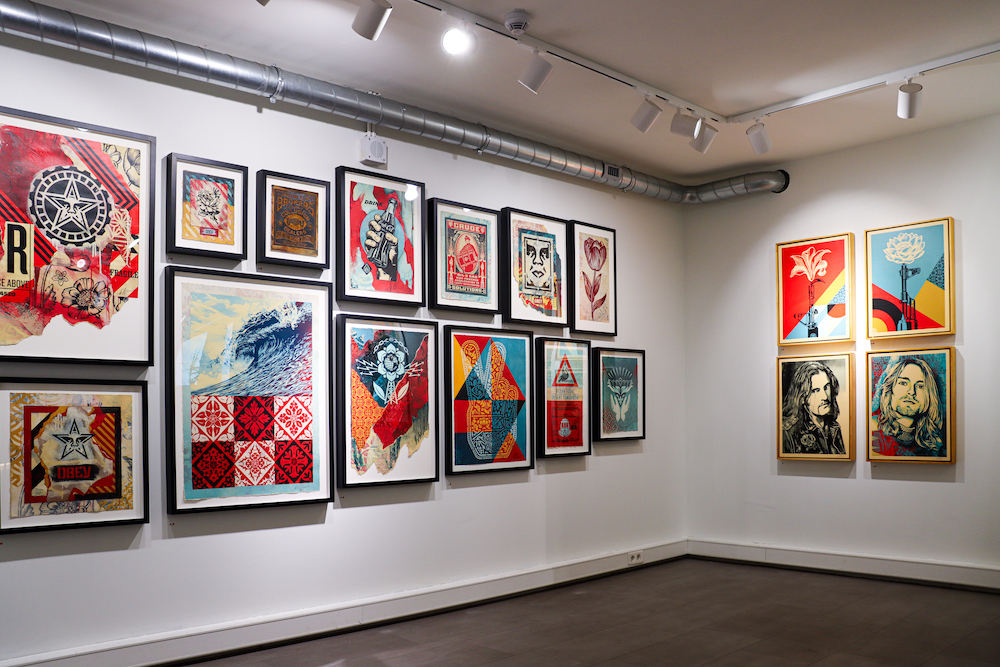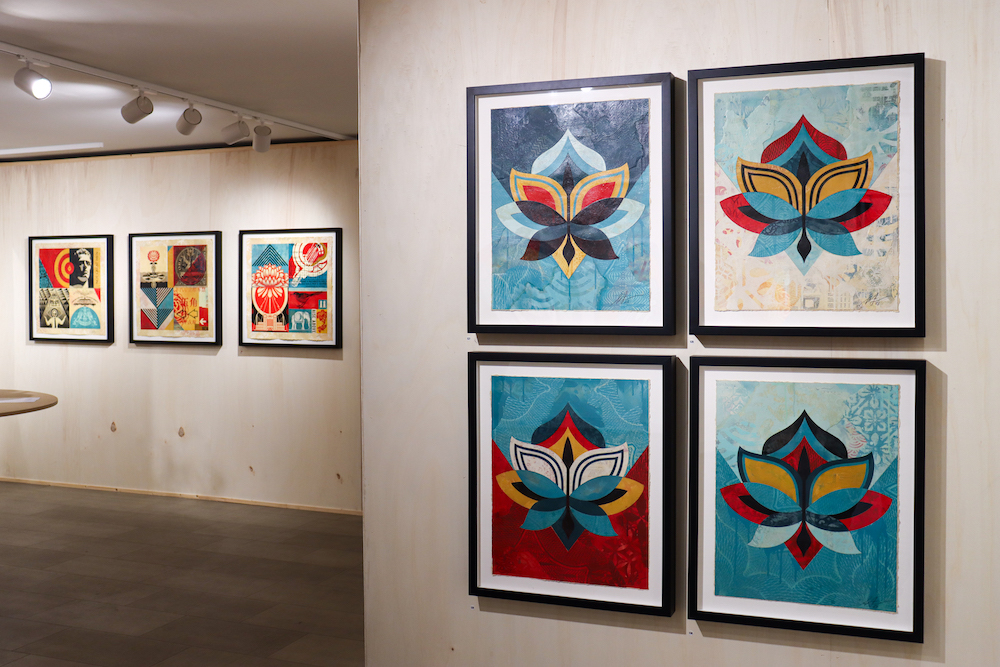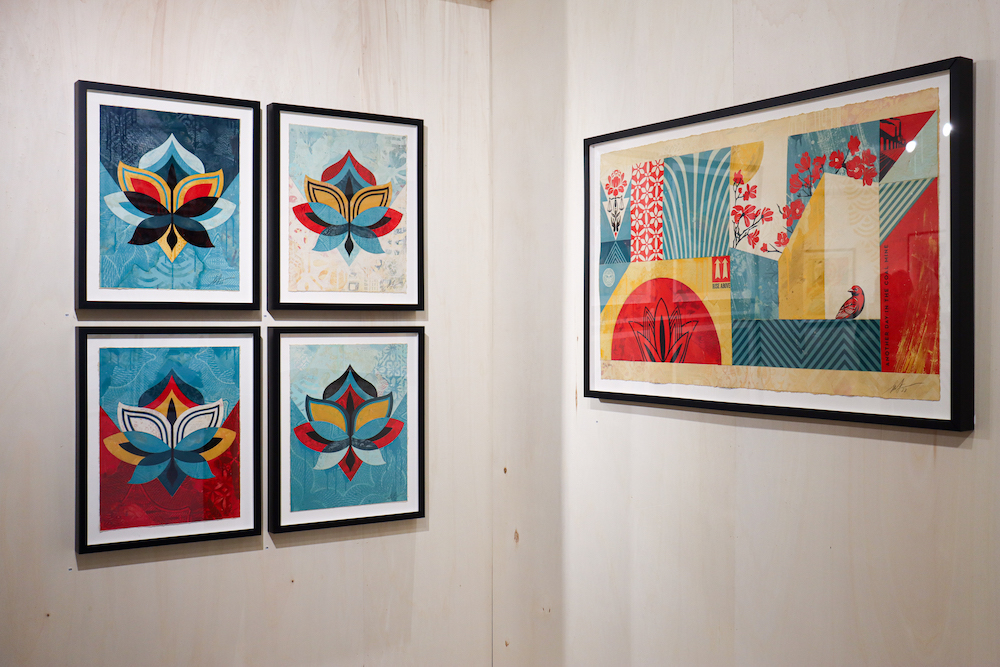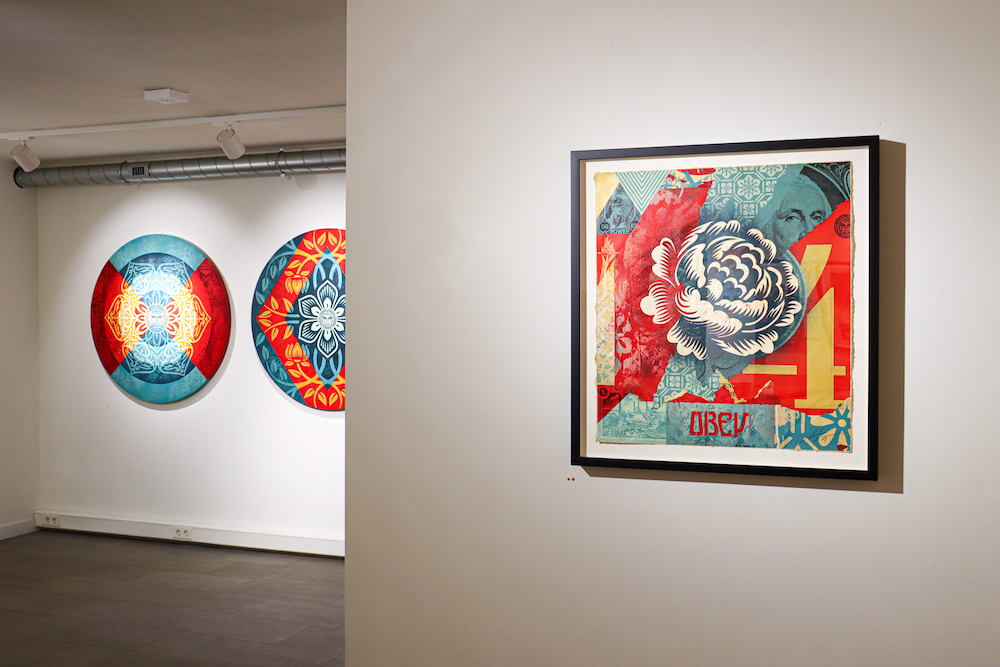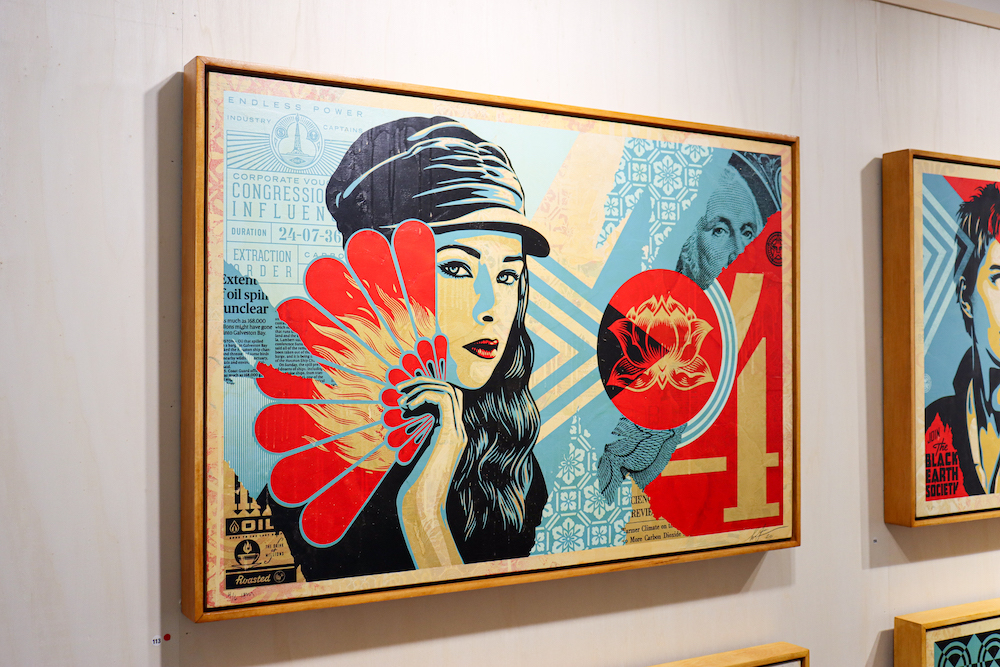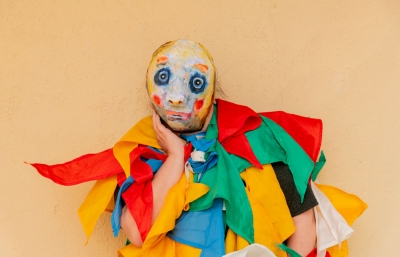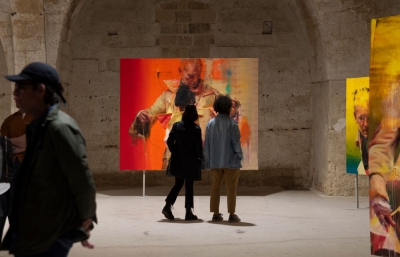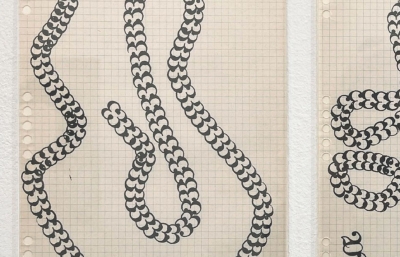The Shepard Fairey exhibition Printed Matters: Raise the Level is on display at the STRAAT Gallery, the in-house gallery at the STRAAT Museum in Amsterdam until Sunday, October 15th, 2023. The good folks over at STRAAT sat down with Shepard Fairey to conduct an interview on the power of the word “obey”, the iconic Andre the Giant Has a Posse sticker, the concept of quality dissent, the phenomenology of Shepard Fairey and more, published here in writing for your reading pleasures. Make sure to follow STRAAT online to catch the full video interview coming your way later on.
Alex Pope: Hi Shepard, how nice to have you here at STRAAT. We're very excited to sit down with you and get your thoughts on your iconic career. First thing we did, we went straight to the source and had a good look at the manifesto as published on ObeyGiant.com. But before we get into the phenomenon of phenomenology, we'd like to go back one step further. What can you tell the people about John Carpenter's They Live and why did the word “obey” resonate so much with you?
Shepard Fairey: When I saw the movie They Live, one, it is a silly, fun movie with a former wrestler, Roddy Piper. And that meant that it was easy to digest. It wasn't highbrow. It wasn't intimidating. Within the movie, the premise that people aren't aware of how they're being manipulated was really profound. The people in the movie don't know that half the population are aliens trying to control them, until they put on these sunglasses, which also allow them to see that the advertisements say things like “consume”, “watch television”, “sleep”, “marry and reproduce”, and “obey”. When I saw the “obey” in They Live styled after Barbara Kruger's typography, it really connected with me - the fact that the set designer for “They Live” saw the correlation between Barbara Kruger's social and political work and what they were doing with the movie, but also the word “obey” itself, the power of that word. I'd been reading people like George Orwell and Ray Bradbury. And I was thinking about control and it was something that was there in my mind, but not as precise as just the word “obey”. So the word “obey” jumped out at me from the screen and I decided to start incorporating it into my work because what I felt was that so many people follow the path of least resistance. They conform to what they think social norms are or what the laws are, what their parents say. And there are a lot of forces of persuasion that would like you to obey their agenda without thinking, without questioning. But when you're confronted directly with the word “obey”, when it's taken out of the ether and rendered concretely, you have to think about what it means to obey. And I think that's powerful.
Allow us to quote from your manifesto here: “The [Andre the Giant] sticker has no meaning, but exists only to cause people to react, to contemplate and search for meaning in the sticker.” What have been some of the most noteworthy reactions and contemplations that made their way to you throughout the years?
When I made the original Andre the Giant Has a Posse sticker, it was an inside joke with some skateboarder friends that was done very spontaneously. But what I quickly realized when I handed the stickers out to friends and then other people started to ask questions - “what is it?”, “What's the sticker about?” - is that it had a power as something that was disruptive. When people are very used to only encountering government signage and advertising in public, something quirky and unexpected makes them ask questions. Now the way people interpret the sticker is a reflection of their personality, like a Rorschach test interpreting what the inkblot looks like to you. So there have been lots of fascinating responses. Some of them have been fear-based, people saying, “Oh, Andre the Giant, who's the posse? This must be about a gang or a cult.” Other people have thought it was connected to skateboarding just by where it was and the way that skateboarders promote things with stickers. Other people thought maybe it was a band. But there have been people that said that it was Nazi or it was anti-Semitic. Of course, it's benevolent, but if your tendency is to fear something you don't understand, it's going to go to that place of fear and whatever the thing is you fear will surface. I think that that is really eye-opening and it's a tool that propagandists use all the time. They know that fear is very persuasive. What I liked with the original Andre sticker was the process of people discovering that it was something that was really just meant to be fun and absurd and disruptive. It's benevolent, but a lot of things that people are confronted with are sinister. Some things are in a benevolent package but are sinister and some things are in a sinister package but are benevolent and people need to look more closely at what is really going on.
On your website, it says you have been manufacturing quality dissent since 1989. How would you describe the concept of quality dissent?
My phrase manufacturing quality dissent is based on the phrase manufacturing consent. There's been a lot of studies about human psychology ever since Freud. Bernays, who was actually Freud's nephew, was one of the first engineers of public relations and understood that if you can convince people to consent to whatever the narrative is, that basically the doors are wide open for big business or for the government to do what they would like. So what I'm trying to do with my work is encourage people to question things. Look at what the agenda is and say if it's in slick packaging and someone is selling it to you, there's a reason for that. What's the reason? Pull back the curtain. And so the dissent is something that may come out of realizing that whatever's out there that you're being asked to consent to, you shouldn't.
A lot has been said about your meteoric rise from underground artists to household name, if you will. A lot of terrible takes as well, like you once said - and I love this quote - "People like to talk shit but it's usually to justify their own apathy." Still, it's got to be somewhat weird for yourself to have achieved major art success with counterculture artworks. How does Shepard Fairey himself experience this?
I see my career as a slow and steady evolution and progression while maintaining the principles I've had more or less since I was a teenager. But understanding that as my career evolves, my audience broadens and I can't remain an underground secret, really it's my work, not me, that I'm hoping that people experience and look into, look for answers to why I'm doing what I do, look for other examples of the work and understand that what I'm doing is an ever expanding mosaic of works that largely have similar themes and there's a cumulative effect to the body of work, a cumulative impact hopefully. I've worked steadily for over 30 years to achieve what I have as an artist with my fine art career, with my murals, with my clothing line, with my notoriety for projects I've done for social and political causes, and it’s motivated by my belief in art as a tool of empowerment and justice, not by the pursuit of fame or fortune for me. 
Your whole body of work has become something that people have their personal relationship to, in a sense you've become quite of a phenomenon yourself, so do you also experience some sort of phenomenology around Shepard Fairey, the individual?
I think that the public projects onto anyone who is creating things that they have a relationship with. Who I am as a real person might not be how someone that doesn't know me perceives me and it's been fascinating to see how some people have said, “Oh well, Banksy is not just Banksy, it's Banksy and Shepard Fairey creating Mr. Brainwash.” And this is not true at all, but to see how people come up with these theories because it's more fun for them, but not based in reality, can be amusing but also frustrating. One of the things that I've always tried to do is demystify what I'm doing, be very open about my thought process, my technical processes with my work, and say to anyone out there, “You could do this too,” but still people, I guess they project the way they do on celebrities in general. I don't consider myself a celebrity, but it's been fascinating to see some of the portraits people have done of me, some of the reinterpretations of my work that people have done. Sometimes they're great, sometimes I have no idea where they're coming from with it, but this is just the nature of creating something that becomes a reference point for people. And I think that whether something is attacking me critically or is paying tribute, the fact that my work is getting a response is an indication that it's achieving what I hoped, which is to connect with as many people as possible and demonstrate the power and the value of art as a tool of communication within culture and society.
The Printed Matters: Raise the Level exhibition can be attended with a regular STRAAT entry ticket through October 15, 2023. The exhibition showcases more than 130 unique Shepard Fairey works, some of which are still up for grabs.

